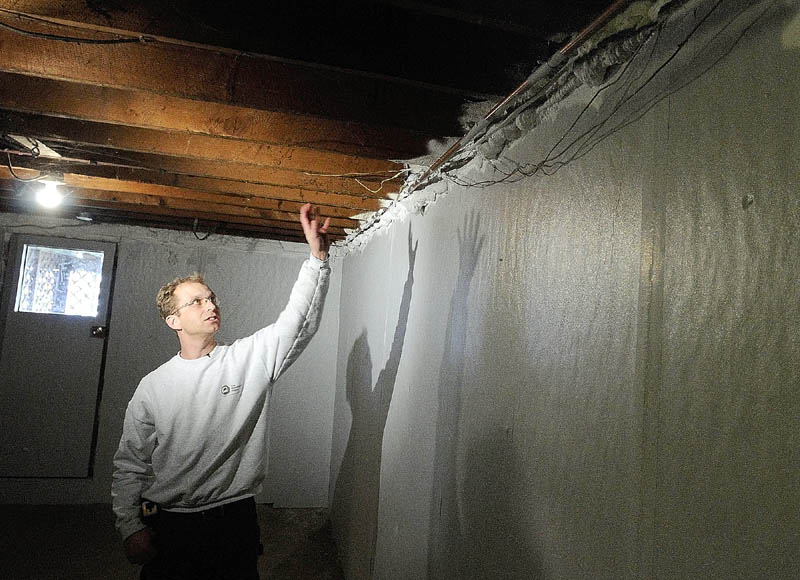AUGUSTA — The 1947 home at the top of Carlisle Street has a new blanket of insulation in the attic, new foam insulation around the sills and a much warmer feel.
It was possible because of a $11,000 loan from Efficiency Maine.
Homeowner John Dickens pointed out the energy improvements Wednesday morning as he led a crowd of state and federal officials through a tour of his house. The tour showcased the work of Bo Jespersen of Mount Vernon, whose firm, The Breathable Home, spent 6 1/2 days buttoning up the Dickens house to stem air leakage and keep in warmth.
“I wished I got him in earlier,” said Dickens, who has owned the home for 36 years. “It’s tighter. After they got through, I could feel it upstairs. I know it’s working.”
He described his previous experience of “walking into a refrigerator” when he would come home after golfing — a favorite pastime of the retiree.
Dickens gave his tour just hours before Efficiency Maine debuted a companion PowerSaver program, a pilot loan initiative of the U.S. Department of Housing and Urban Development. It offers loans of up to $25,000, which can be used to do weatherization, door and window replacement, efficient heating systems and water heaters, as well as solar and geothermal systems and Energy Star metal or asphalt roofs.
For his home improvements, Dickens obtained a Property Assessed Clean Energy loan, known as PACE, available in communities that adopted a ordinance in amounts between $6,500 and $15,000 to make residences more energy-efficient.
Dickens was one of 180 homeowners from across the state to use a PACE loan in the first year of that program, said Dana Fischer, residential program manager with Efficiency Maine. About 60 percent of the municipalities in Maine have adopted a PACE ordinance.
“We have high aspirations for the number of homes that will be weatherized,” Fisher said. “With the price of oil the way it is, and with it being the beginning of the construction season, this is the time to do it.”
On Wednesday, Jespersen crawled into two attic areas in the Dickens home, showing how insulation techniques differed to allow nature to control the temperature in one area and Dickens to control it in the other.
Then Jespersen led the tourgoers to the basement, where 2-inch-thick Thermax rigid foam insulation covered the top 3 feet of so of the concrete walls. Spray foam insulation painted with a thermal barrier filled in the gap on top.
He explained that insulating those areas would provide the biggest return for the investment.
Dickens, 77, said he and his wife had made improvements to the home over the years, including putting in a new furnace and new windows a dozen years ago.
For the PACE loan, he had an energy audit, obtained estimates from two contractors, then chose one to do the work. He estimates he’ll save 200 to 300 gallons of oil over a winter and some $1,000 to $1,100 annually.
“What I’ll save on fuel will more than cover the loan payments,” Dickens said.
Betty Adams — 621-5631
badams@centralmaine.com
Send questions/comments to the editors.



